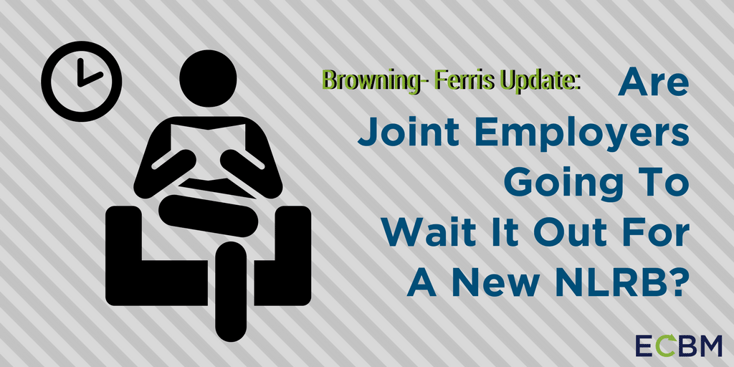
August 2016, the National Labor Relations Board issued its decision in the Browning-Ferris case. That decision significantly revised the National Labor Relations Board test for determining who constituted an employer in joint employment situations. The NLRB returned to an older test that looked at both direct and indirect test control over the terms of employment instead of just direct and immediate control.
Joint Employers Still Facing Uncertainty And Risk
The decision led to a lot of concern in the business community as it raised the possibility of significantly increased liability for companies in certain kinds of contracting relationships. Franchisors especially became concerned about being held liable as an employer for the actions of franchisee stores. Several companies halted investment and expansion plans until they could gain greater certainty on these issues.
Shane Moran, VP, ECBM, believes that many other key regulatory changes led by the Obama White House have now been thrown up in the air. “Key initiatives such as increasing employee eligibility for overtime and the new fiduciary rule for retirement plan advice have faced legal challenges in court; they also face incoming presidential administration with a pro-business bent,” he states. More From Shane Moran
The Incoming NLRB May Change All Of This
Yet the structure of the different agencies involved may help entrench the Browning Ferris decision more so than those other employment related initiatives. Most of those involve rule changes and interpretations made by administrative agencies. A new head of the Department of Labor could undo these changes easily and quickly for the most part. The National Labor Relations Board however involves a five person panel appointed to serve rotating five year terms. Obama appointments will maintain a majority on the board for at least another twelve months and any decision overturning Browning-Ferris will have to wait for the right case to appear on the National Labor Relations Board docket after that happens.
Appeals Continue in Browning-Ferris
The Browning-Ferris’s appeal of the NLRB decision continues. The parties have filed their appellate briefs before the D.C. Circuit Court. In their briefs, Browning-Ferris argued that the new NLRB test was vague and unworkable. The company argued that companies could not predict what the Board would consider a joint employer relationship based on the factors described in the original decision. For its part, the Board argued that its joint employer standard was reasonable and fell within its discretion.
The NLRB has also received support in the case from the U.S. Equal Employment Opportunity Commission, who has long used a similar joint employment test in discrimination cases and who argued to the Court that the Court should allow the NLRB to use their test to ensure uniformity in employment law. READ MORE: NLRB Changes Definition of Joint Employer
What Can Businesses Do?
For now, though, companies worried about joint employer liability should review their policies and procedures to seek compliance with the Browning-Ferris decision. This may mean stepping back forms of action taken over employees at contracting businesses to avoid the appearance of indirect control, including reviewing contracts to remove language which could be damaging.
